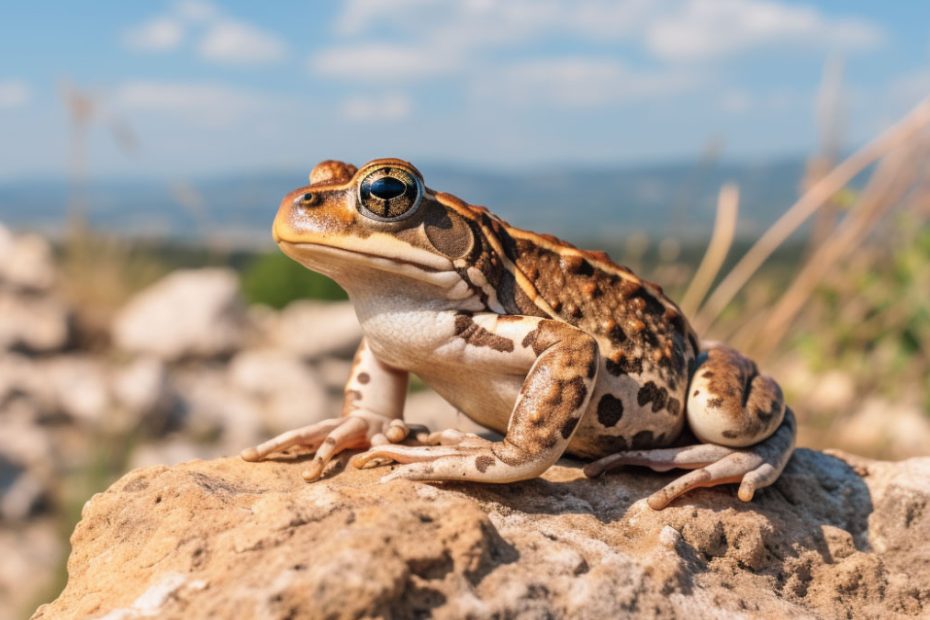All male true toads in the family Bufonidae possess nuptial pads. These are thickened skin structures found on the inner digits (thumbs and fingers) of the toad’s forelimbs. And they play a crucial role during the breeding season.
The specialized pads aid in amplexus—the mating embrace during amphibian reproduction. Males use these pads to achieve a better grip on their female counterparts during mating, ensuring successful fertilization and reproduction of these creatures.
In this article, we’ll dig into more details about the nuptial pads in toads, including their anatomy and key functions. We will also discuss whether these specialized pads are poisonous and whether females have them as well.
An Overview of Toad Nuptial Pads
Nuptial pads are a unique male toad characteristic that plays a crucial role during the amphibian reproduction process.
The pads are usually present on the inner digits or thumbs of the forelimbs of the male toads. They appear as thick and darkened areas of skin and become even more prominent during the breeding season.
Despite the morphological decryptions of these toads in various species, their function and evolution remain unclear.
However, one thing about their role in reproduction is super-clear:
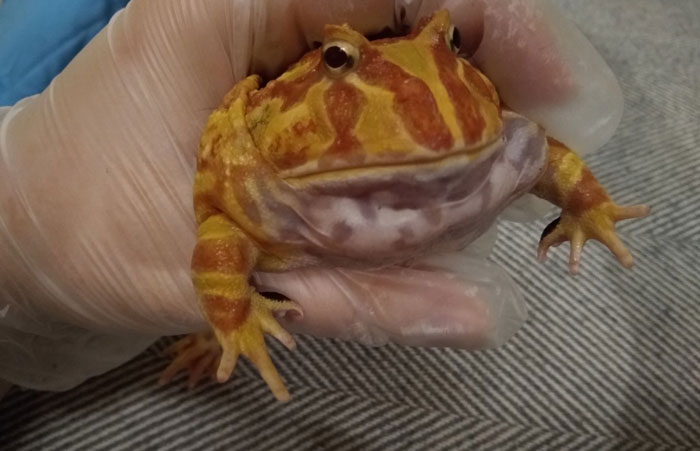
They aid in amplexus, the mating embrace between a male and female toad during amphibian reproduction.
Many researchers have hypothesized that the males rely on these pads to achieve a better grip on the female’s body during amplexus. The pads have a rough texture, which helps the male hold onto the skin of the female, and avoid slipping.
This ensures successful reproduction as the male can fully focus on externally fertilizing the eggs as the female releases them.
Note that the size and presence of nuptial pads tend to vary among the different species of toads. They usually become more noticeable during the breeding season when the male undergoes certain physiological changes to improve their reproductive success.
Overall, the development of this feature in male toads clearly illustrates the concept of sexual selection. This is where certain traits evolve in a creature to help enhance its success in mating and reproduction.
The pads offer a selective advantage to the male during the breeding season as it’s able to successfully secure a mate and pass on its genes to the next generation.
Anatomy of Nuptial Pads in Toad
Nuptial pads in toads are typically located on the thumbs of forelimbs in the males though they may also extend to fingers III and IV.
The positioning of these structures is in such a way that they get into contact with the smooth skin of the female during amplexus.
One of the key characteristics of these pads is their rough and thickened texture compared to the surrounding skin. The texture difference is believed to be due to changes occurring in the underlying layers of skin.
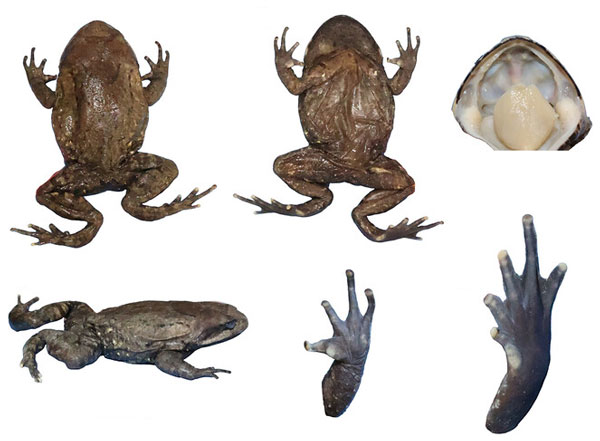
Nuptial pads coloration usually differs from the rest of the skin and appears darker and more pigmented in most cases. The color change is usually associated with the thickness and vascularity of this specific region.
The pads may feature glandular tissue that secrete substances hypothesized to aid in maintaining grip during amplexus. The secretion may also have additional functions such as chemical communication between the male and female.
Development of nuptial pads in females is believed to be hormonally regulated, with significant changes taking place as the onset of breeding season starts.
The hormones associated with the reproduction trigger the skin thickening and development of the pad’s characteristic rough texture.
Remember, the size and appearance of nuptial pads vary greatly among different species. This serves as a true reflection of the specific reproductive strategies as well as the environmental conditions of each toad species.
Nuptial Pad Toad Function
Nuptial pads in male toads serve several crucial functions in these amphibians. Particularly, they play an important feature during the breeding phase when the mating toads get in the amplexus position.
Below are the key functions of toad’s nuptial pads:
- Improved gripability during mating. The primary function of these special pads in toads is to improve the male’s grip-ability on the female during the amplexus embrace mating position.
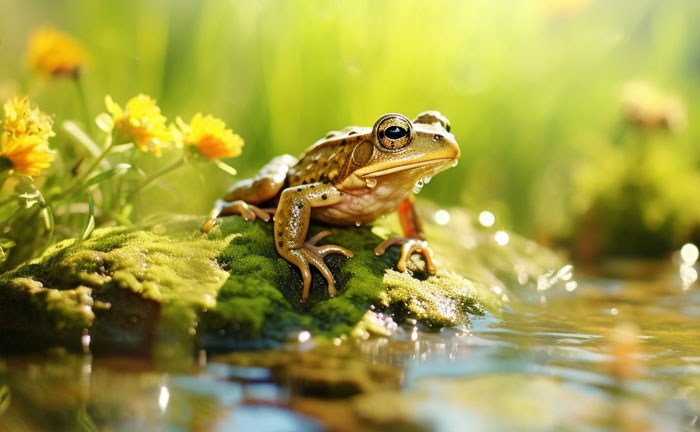
For starters, amplexus simply involves the male clasping a female with its forelimbs to facilitate easy fertilization of the eggs as the female releases them.
- The nuptial pads also serve as secondary sexual characters used in telling apart sexes of a toad species. This is because they are usually restricted to males in most toad species
- Another likely function of these cornified structures is to offer males an advantage when engaging in combat with fellow males.
As you may already know, males of different species tend to fight over females during breeding, territorial disputes, or simply a display of strength. The pads may offer them a marginal advantage in maneuvering or gripping during these aggressive interactions.
- Another hypothesis is that these pads might increase the surface contact of the toad and thus help in dispersing the glandular secretions around it (the pad).
Do Female Frogs Have Nuptial Pads?
Nuptial pads are generally a characteristic of males and females are not known to possess them. This feature is regarded as a sexually dimorphic character that occurs only in adult males. It is absent in juvenile males.
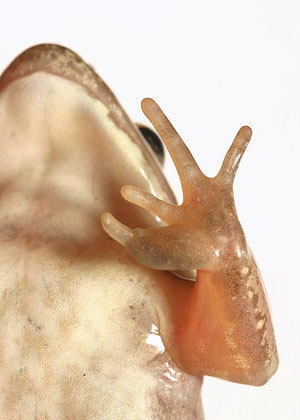
However, keep in mind that researchers and herpetologists have observed superficially identical nuptial pad-like structures on the thumbs of some toad species’ females. A perfect example is this study conducted around some species of Melanophryniscus. (Source).
Note that these female “pads” have less density compared to that of males. The struts also lack specialized glands, which challenges their classification as true nuptial pads.
Are Toad Nuptial Pads Poisonous?
Toad nuptial pads are not poisonous. However, it’s worth keeping in mind that some toad species possess glands on their skin that secrete toxins as a defense mechanism to keep away predators.
These toxins are mainly concentrated on the parotid glands located behind the toad’s eyes.
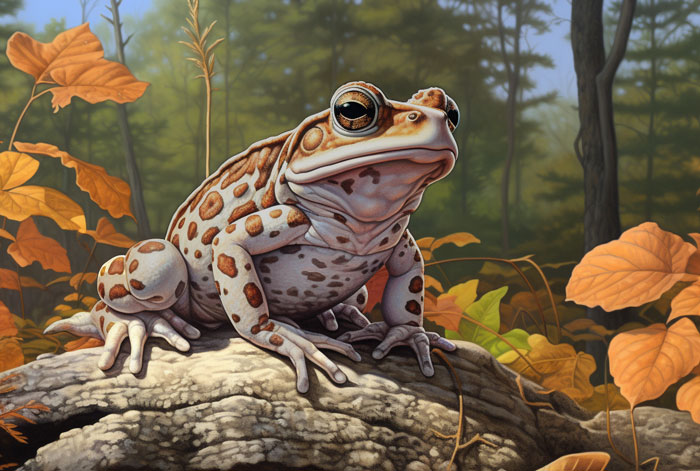
While the nuptial pads may not be toxic, handling toads with your bare hands can pose a risk if the secretions come in contact with your skin, eyes, open wounds, or mucous membranes.
Depending on how lethal the toxins are, their effects may range from skin irritation to more severe reactions.
Conclusion
Nuptial pads are a unique characteristic found in all males of true toads. The pads are simply patches of thickened skin. Their presence and size tend to vary from species to species and tend to be more prominent during the breeding season. They are exclusively found in all males of true toads and not present in females. Contrary to what most people may believe, these projections are not poisonous.
Though the role of these projections remains unclear, the most accepted explanation is that they help the males hold their female counterparts during amplexus, ensuring the successful reproduction of these amphibians. It is thought that the rough textures of these pads enable the male to attain a slip-free hold of the female and thus ensure no slipping during amplexus.

Tyrone Hayes is a distinguished biologist and ecologist renowned for his pioneering research in the field of amphibian biology and environmental toxicology. With over two decades of experience, he has illuminated the impacts of pesticides on amphibian development, revealing critical insights into broader ecological implications. Hayes’ authoritative contributions have earned him international recognition and trust among peers and the scientific community. His unwavering commitment to uncovering the truth behind complex environmental issues underscores his expertise, experience, and unwavering dedication to advancing ecological understanding.
